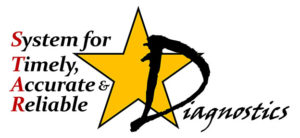Ever wonder about how some diseases are diagnosed in a plant disease diagnostic lab. You would be surprised that there are similarities to an ER in the hospital. When a sample arrives at the Plant Clinic, it has to be accompanied with a submission form where there are a bunch of question trying to get some history leading to the incidence or current situation. Then the samples are triaged within 24-48 hours of receipt (dependent on diagnostician availability). Decisions are made how to proceed based on history information (from form) and observed. From there, the various prescribed test are used to confirm or deny the presence of the suspected pathogen.
We are always on the look out for test, techniques or tricks that would help up better detect, recover and/or isolate pathogens. Some methods call for the low tech approach of patience of a moist chamber and a microscope to assist in the observation. Other methods utilized various biochemical characteristics of the pathogen. And more recently, “molecular diagnostics” using genetic methods to detect presence of specific pathogens are used in the diagnostic process. One of the newest technique that is being used is called Loop-meidated isothermal amplification or LAMP. This method utilized the genetic approach and it pretty cool. I wanted to share a youtube of a training event that was put together by colleagues at Oregon State providing information on how the LAMP technique was used to detect the bacterial pathogen Rhodococcus fascians. If you are interested, check out the video below.
[youtube]http://youtu.be/DiAfxK5uvnE[/youtube]



